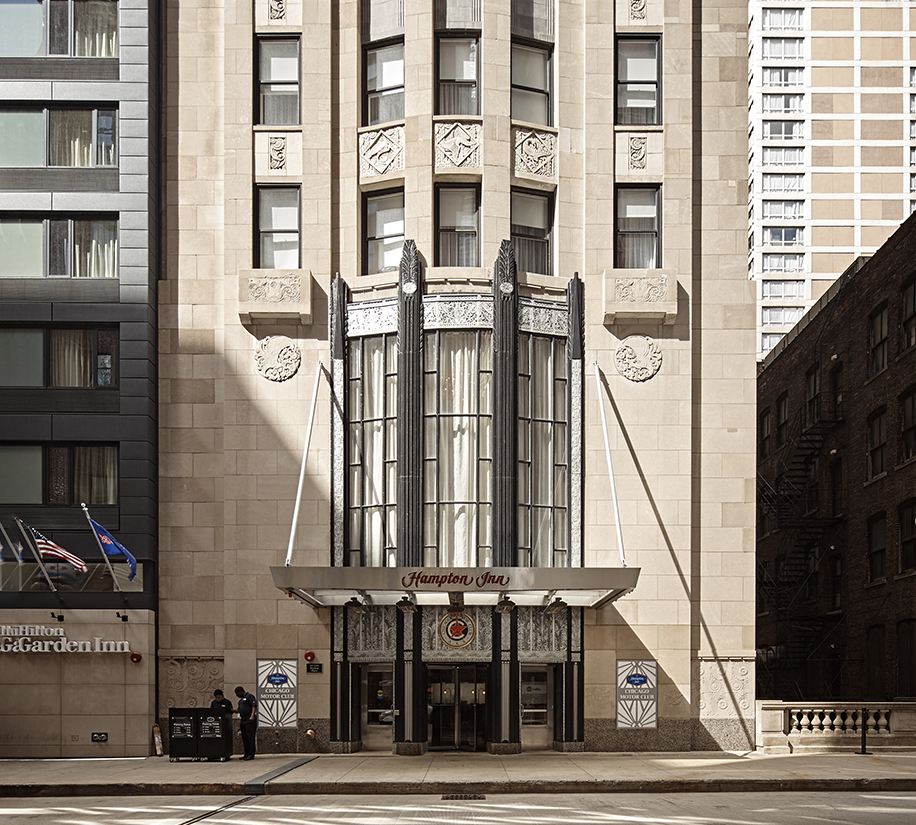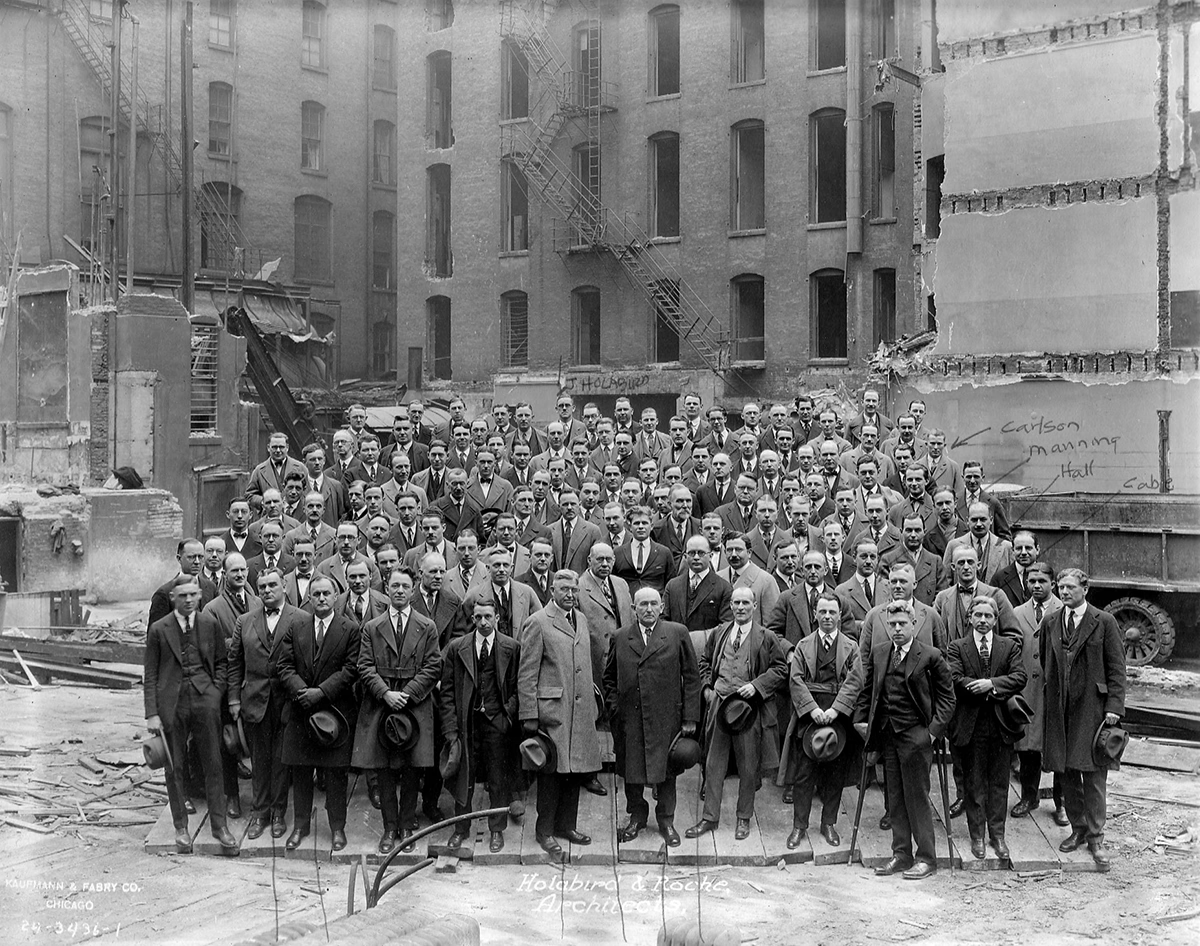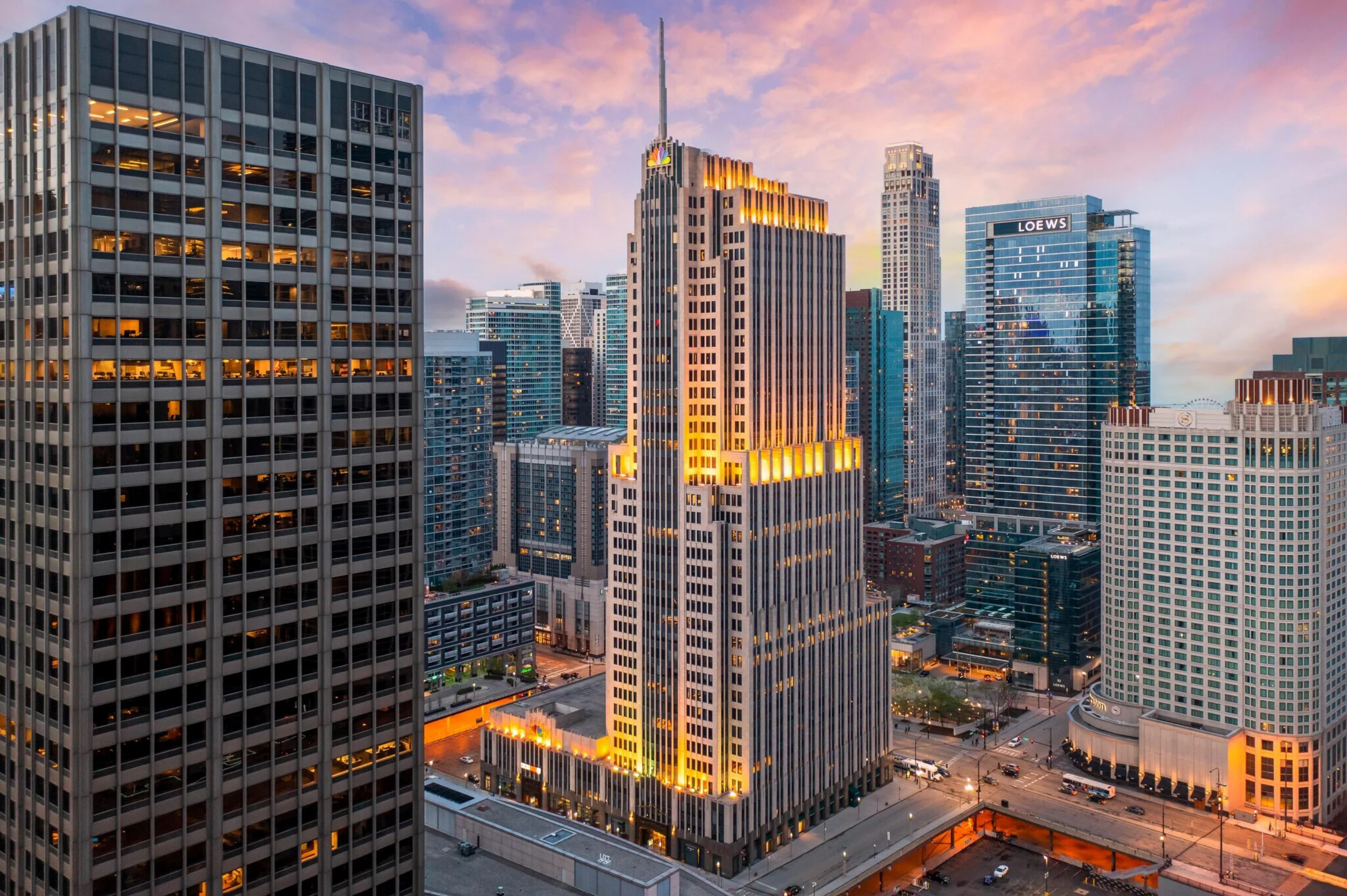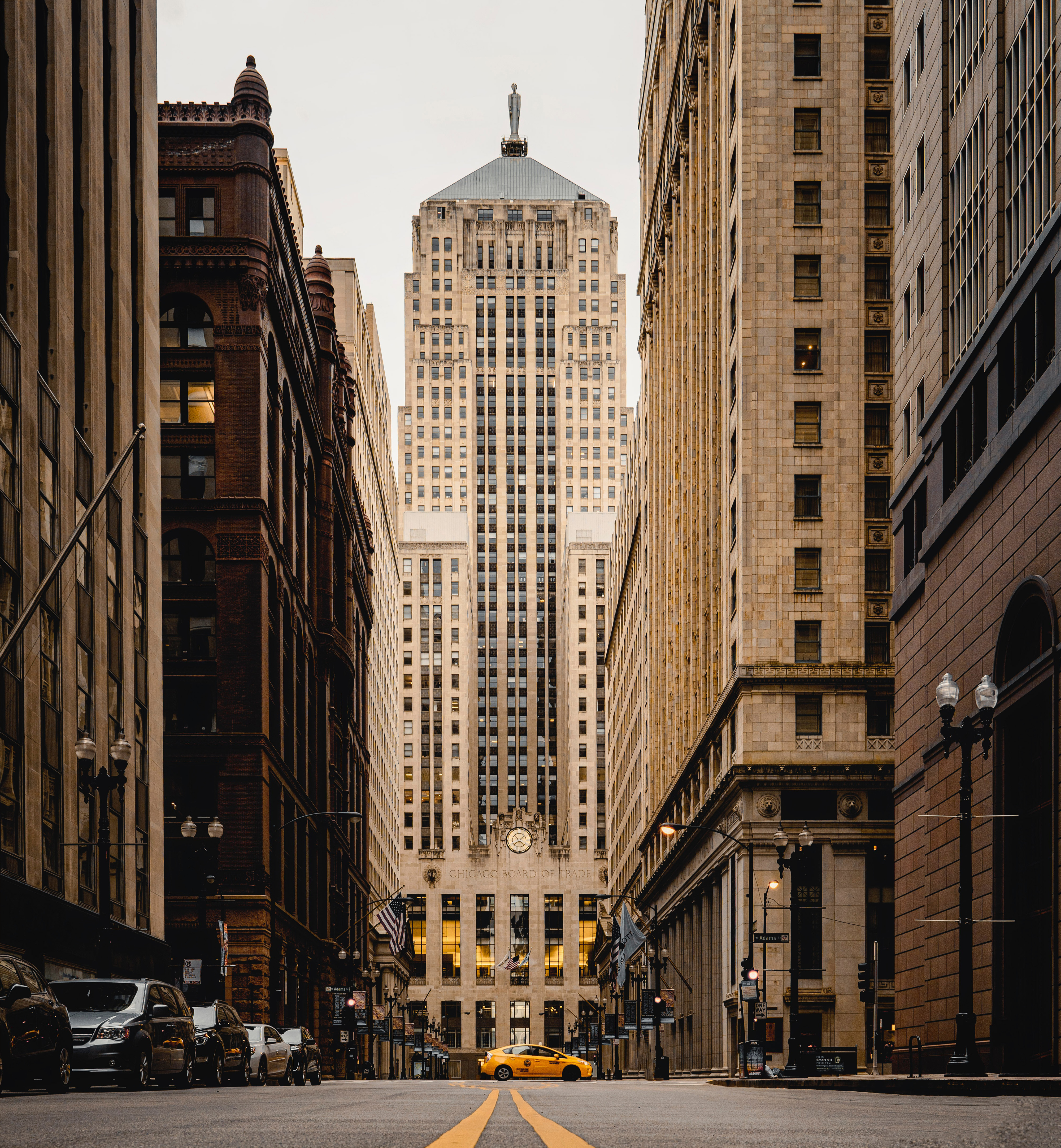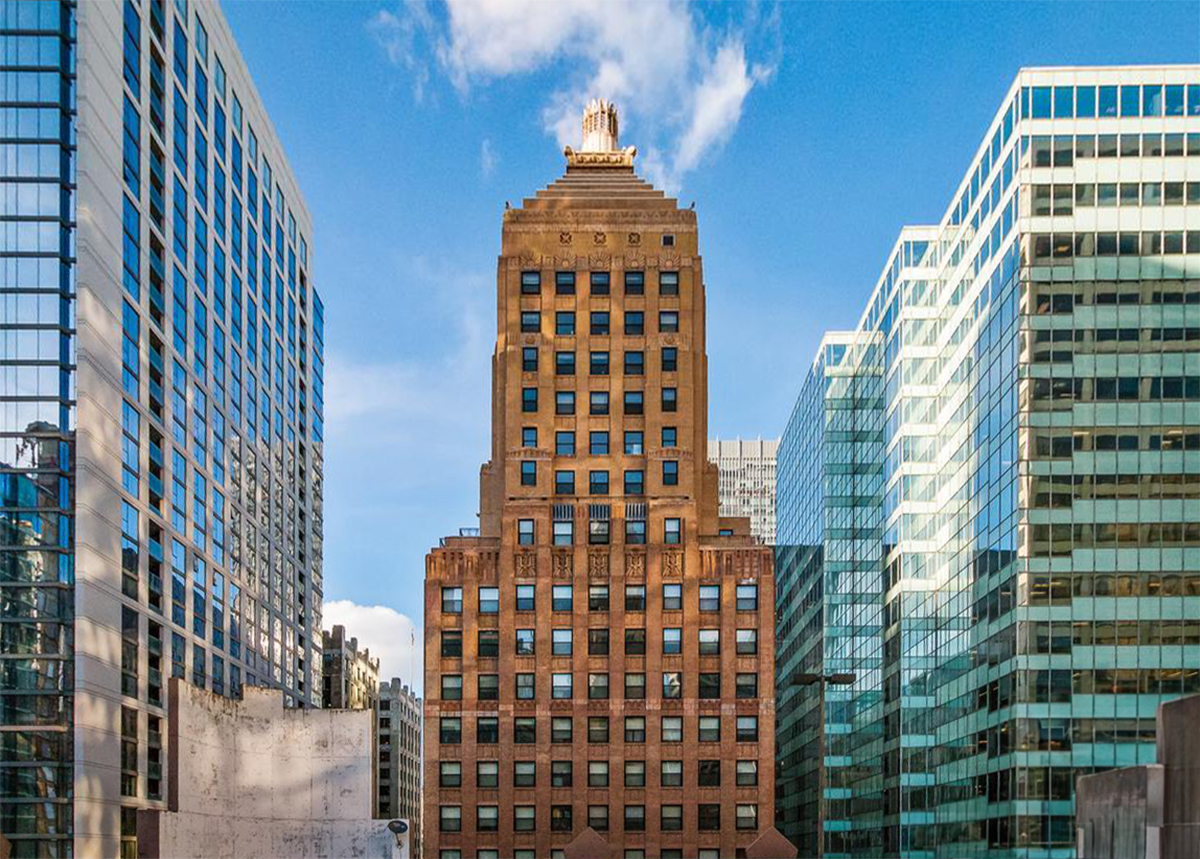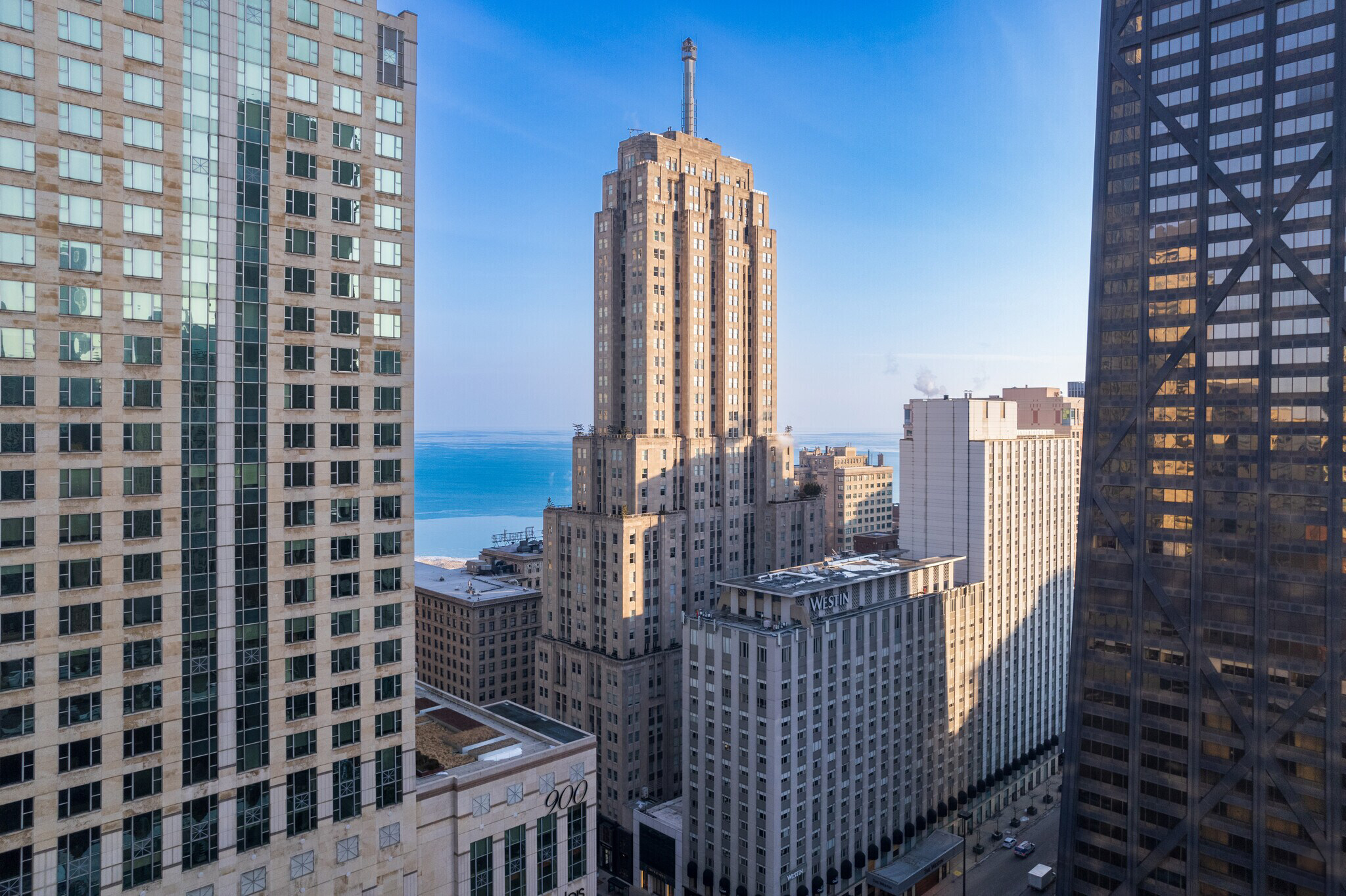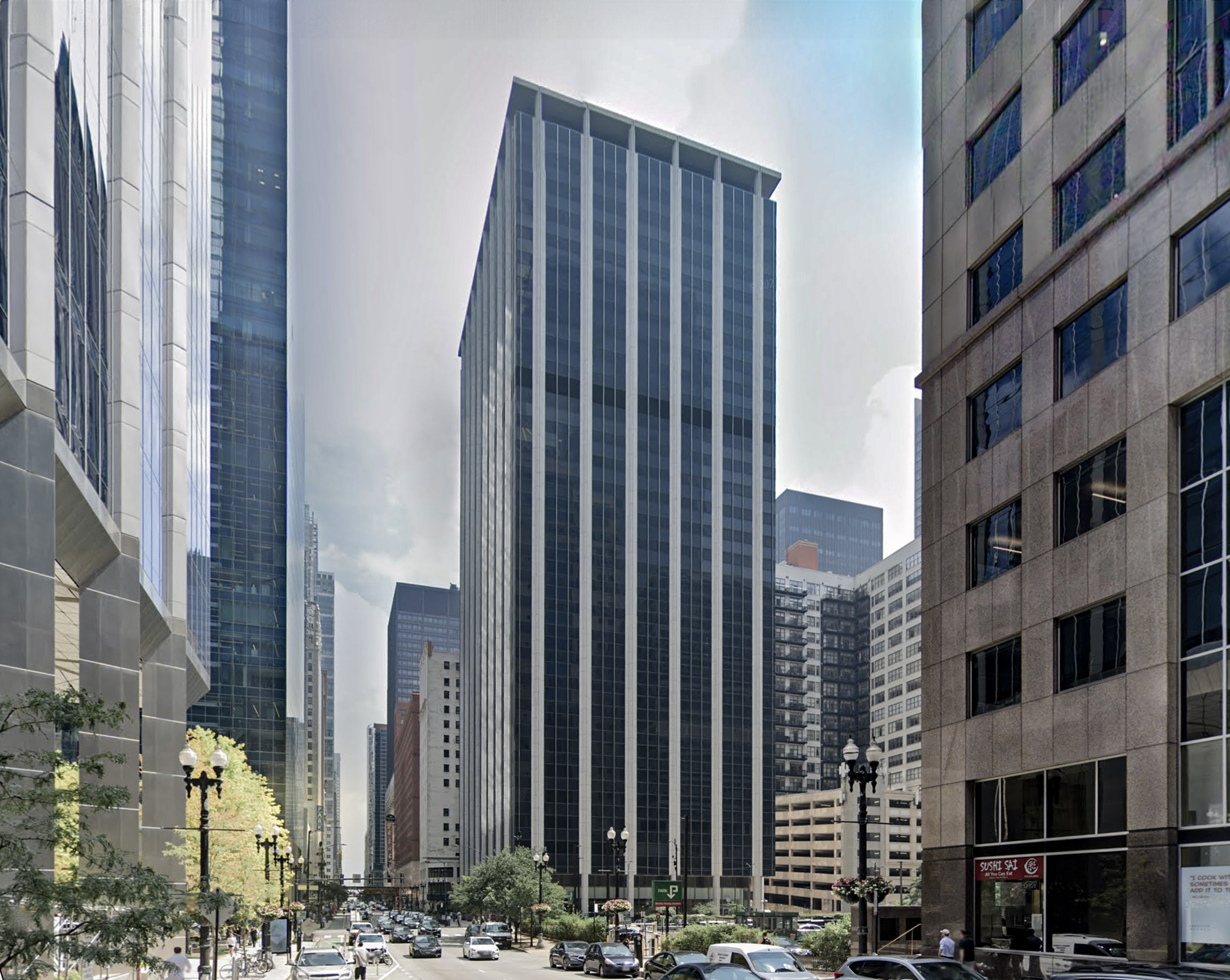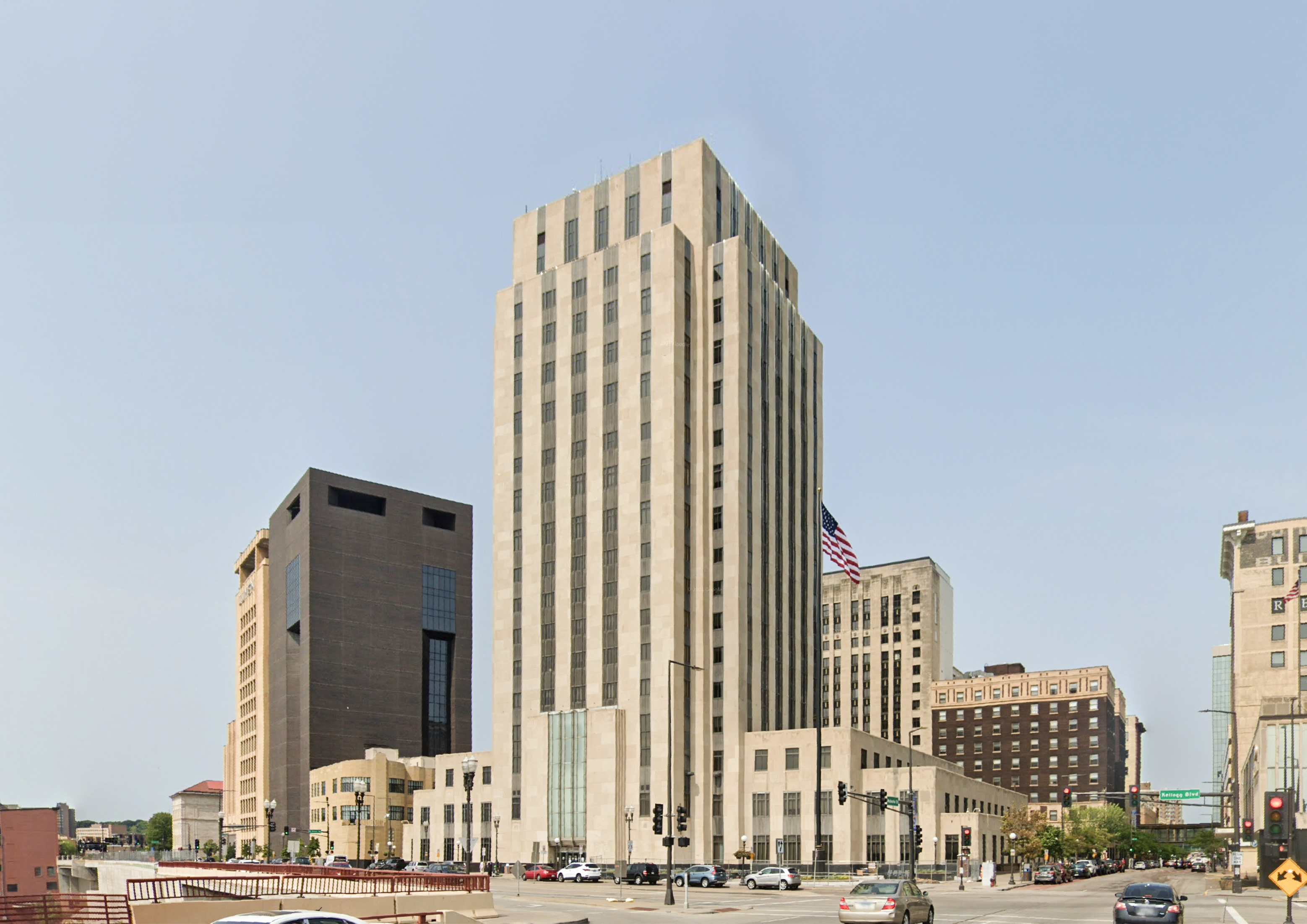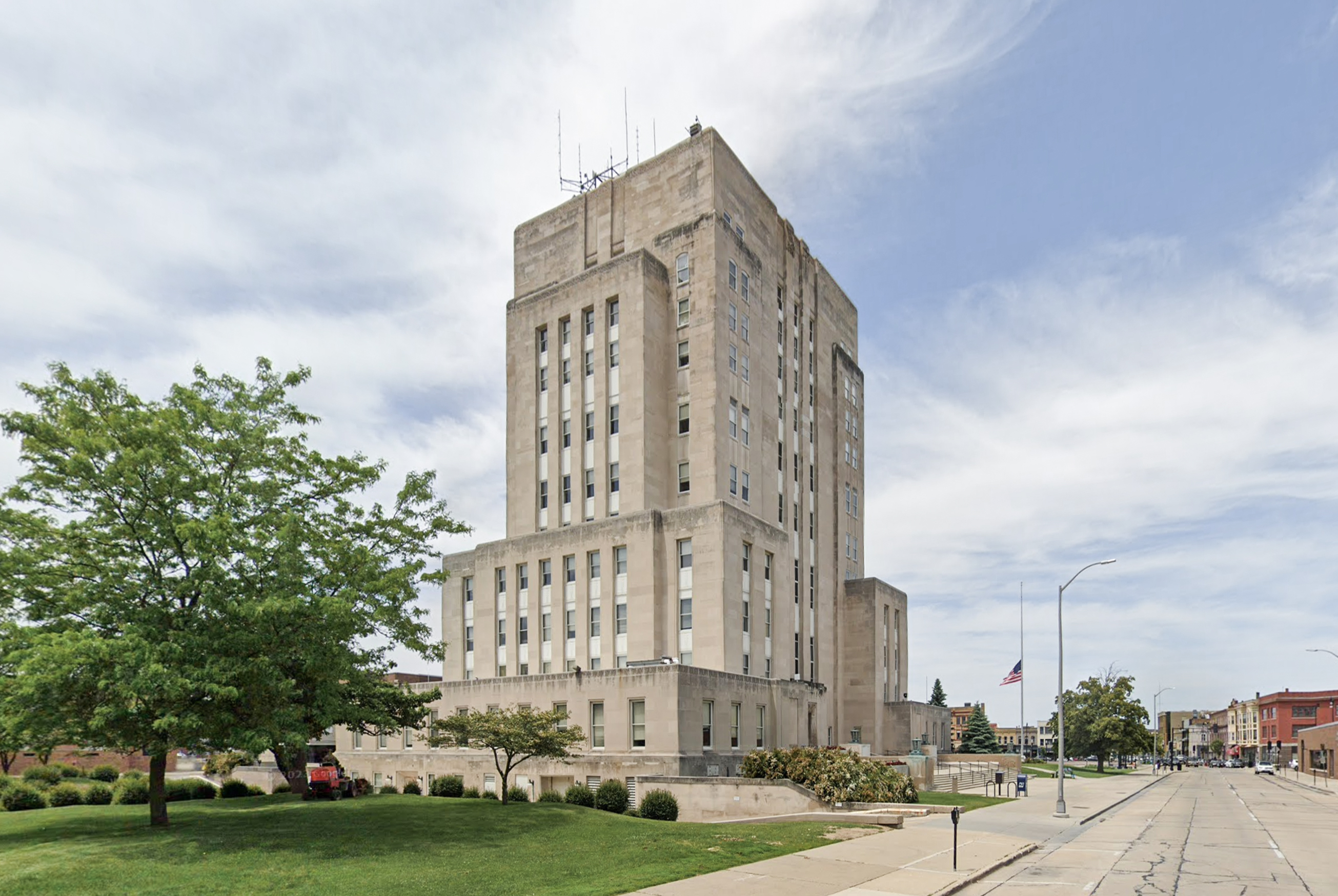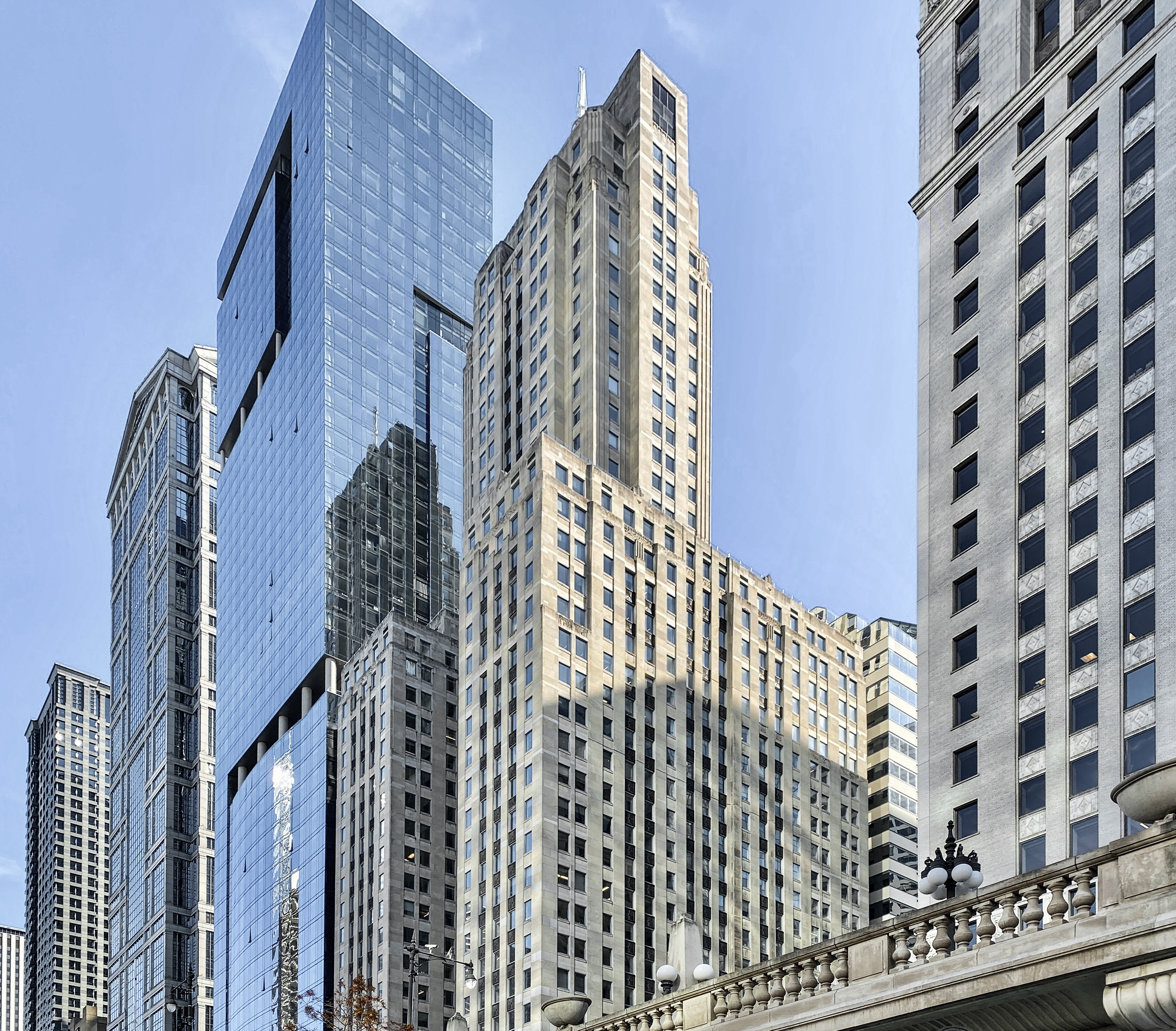The Chicago Motor Club Building is an Art-deco skyscraper designed by Holabird & Root, and built in 1929 in Chicago, IL.
Chicago Motor Club Building is not the only name you might know this building by though. It is common for companies to want to attach their names to iconic buildings when they move in, or for the general public to come up with nicknames, and this one is no exception. The building has changed names several times over the years, and is also known as:
- 68 East Wacker Place.
- AAA Building.
- Hampton Inn Chicago Downtown/N Loop/Michigan Ave from 2017 until this day.
Its precise street address is 66 E. South Water street (68 E. Wacker Place), Chicago, IL. You can also find it on the map here.
The Chicago Motor Club Building is a structure of significant importance both for the city of Chicago and the United States as a nation. The building embodies the distinctive characteristic features of the time in which it was built and the Art Deco style. Because of that, the Chicago Motor Club Building was officially declared as a national landmark on March 1st 2012.
The building underwent a major restoration between 2015 and 2017. The architect commissioned to undertake this restoration was Murphy Asset Management, and a team of designers.
